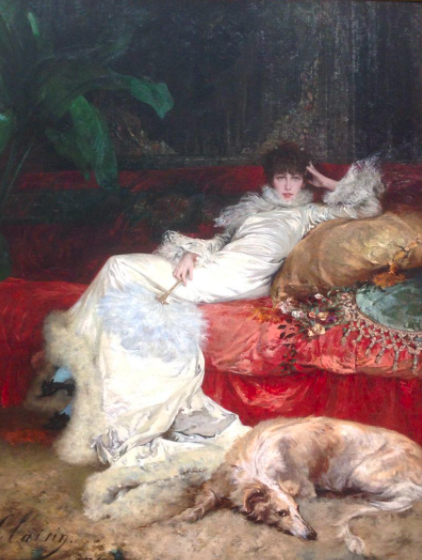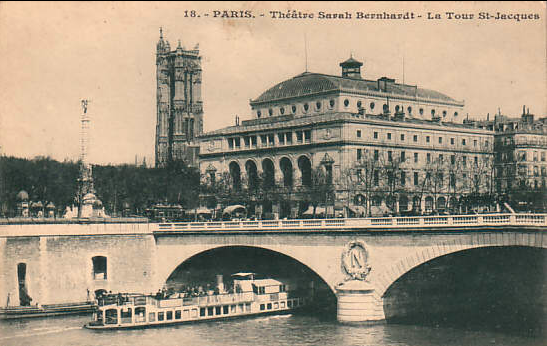Sarah Bernhardt—La Divine
Nowadays, the world has its fair share of international stars and globally famous artists. But things have not always been that way, and it was no so long ago that talent and skills were only recognized on a local or national level.

Born in 1844 and becoming one of France’s most renowned thespians during the late 19th and turn of the 20th centuries, actress Sarah Bernhardt could be considered France’s first international star.
A fascinating woman all around, she lived her life with passion, independence, freedom, and originality.
Nicknamed La Divine, her strong mind and unique gift, paired with a flair for mystery and image, contributed to making her a stage legend.
From her childhood to her later years, she paved the way for women and artists on many levels, from the roles she portrayed to the theatres she directed, from her engagement during the war to her triumphs across the Atlantic.
Suffice to say that her life represents an enthralling journey worth examining.
The life of Sarah Bernhardt

Born Henriette-Rosine Bernard in Paris in 1844 to a Dutch Jewish courtesan mother and an unregistered father, the child was raised early on by a nurse in Brittany. As a young girl, she attended boarding school in Auteuil and afterward entered a convent school in Versailles through the help of her mother’s friend the Duc de Morny, an affluent man (he was the half-brother of Emperor Napoleon III). It is the same Duc de Morny who recommended she become an actress and arranged for her to audition at the Conservatory (prestigious Parisian drama school) where she was accepted and studied from 1860 until 1862. She was then enrolled at the famous Comédie-Française, the country’s national theatre company, but she departed early on due to a dispute with another actress.
Four years later, now a young single mother to her only child, Maurice, the fruit of her brief relationship with the Belgian Prince de Ligne, Sarah Bernhardt began acting at the Theatre de l’Odéon, on the Left Bank of Paris. From one role to another, she mastered her art and rose to fame during this rich time of her life. Amongst the many plays she took part in were Alexandre Dumas’ Kean, Jean Racine’s Athalie and François Coppée’s Le Passant.
When the Franco-Prussian War broke in 1870 and the capital was besieged, Sarah Bernhardt took part in the collective efforts and transformed the Odéon into a hospital for the wounded soldiers, acting as a nurse and a leader.
After the war, the Theâtre de l’Odéon reopened in 1872 and the actress portrayed one of her most prominent roles: The Queen of Spain in the play Ruy Blas, written by Victor Hugo. Her success lead Hugo to call her the Voix d’or (Golden voice) and the Comédie-Française to ask her to return on their stage. She agreed and continued to impress audiences, notably as the titular role in Phèdre by Jean Racine. Her recognition as a great actress was obvious, hers was a stellar trajectory.
Sarah Bernhardt and her admirers

Her admirers were many, including:
- Alexandre Dumas (a friend of De Morny who encouraged her from the beginning) to
- Victor Hugo who wrote her a letter expressing his admiration after seeing her act in his play Hernani.
- Edmond Rostand, creator of Cyrano de Bergerac, wrote parts for her, including La Princesse Lointaine.
- The illustrious photographer Nadar took her portrait on more than one occasion.
In 1880, she left the Comédie-Française and set out to perform with her own troupe on different stages both in France and abroad, in countries such as England, Denmark, Belgium, and the United States where she received standing ovations. La Dame aux Camélias by Alexandre Dumas Fils and Hamlet by Shakespeare were two of her great triumphs. In the latter play, she interpreted the part of Hamlet, one of the many male characters she embodied throughout her career.

Alongside her acting projects, she became owner, artistic director, and lead actress of Théâtre de la Renaissance from 1893 until 1899 and the Théâtre Sarah-Bernhardt from 1899 until her death in 1923. At the Théâtre de la Renaissance, she hired Czech painter Alphonse Mucha to illustrate the ads for the plays. A series of illustrations done by Mucha, representing Sarah Bernhardt as her characters, constitute the rich collaboration between the two artists.
Mysterious, talented and audacious, it feels as if Sarah Bernhardt lived her life the way she intended it: to the fullest. An icon, a feminist before her time, a free spirit.
Sarah Bernhardt continued acting until the very end, and still had projects in the works by the time of her death in 1923.
If you would like to discover other fascinating French women, here is an article about author Colette and another about a young Belle Epoque diarist named Marie Bashkirtseff.
Image credits via wikipedia





